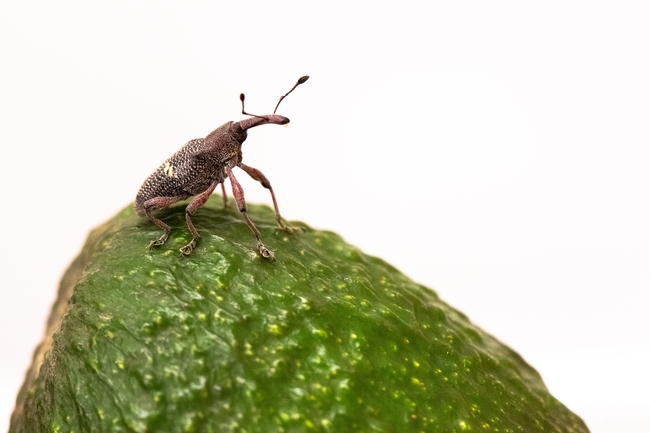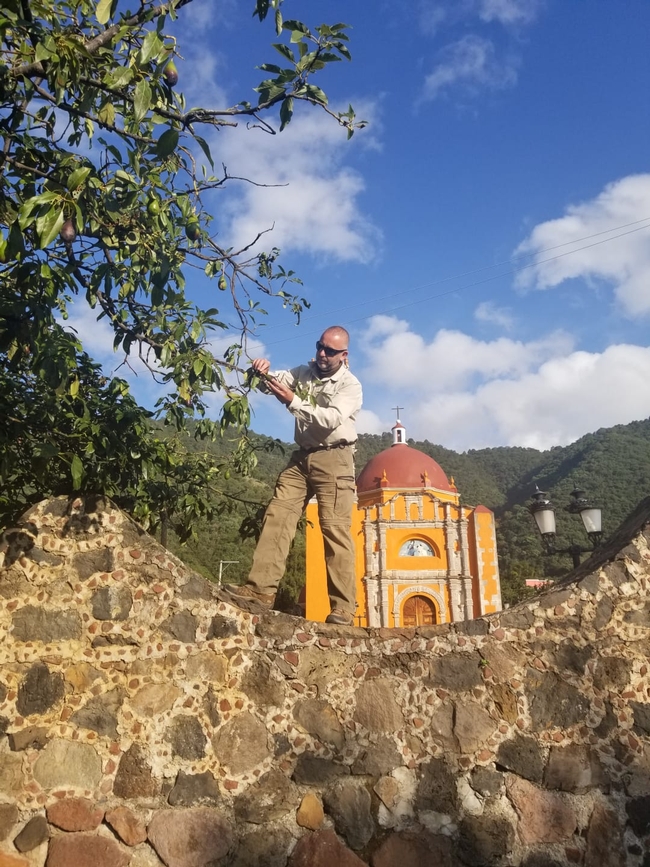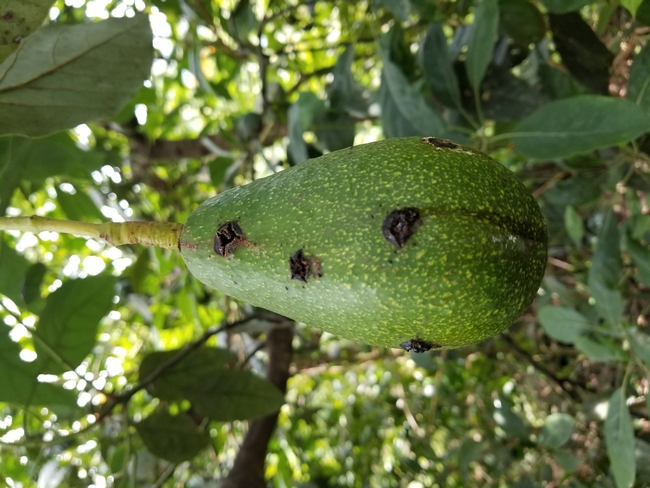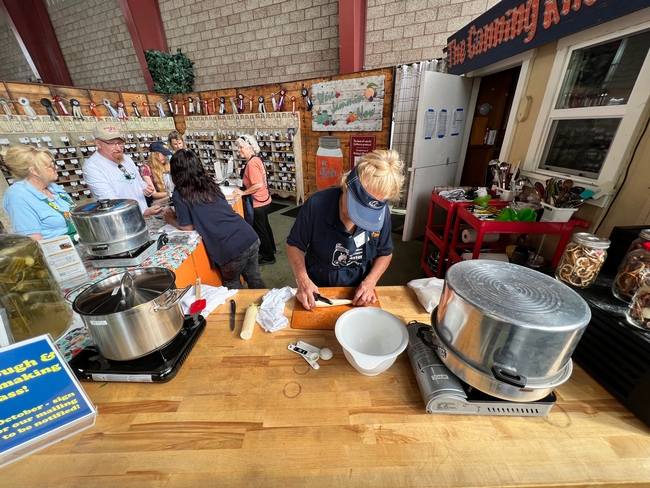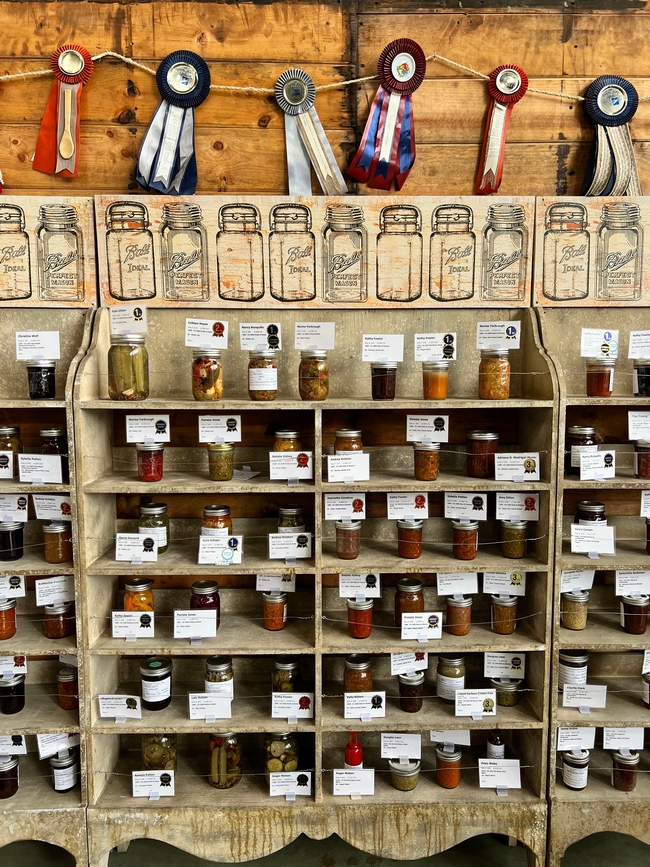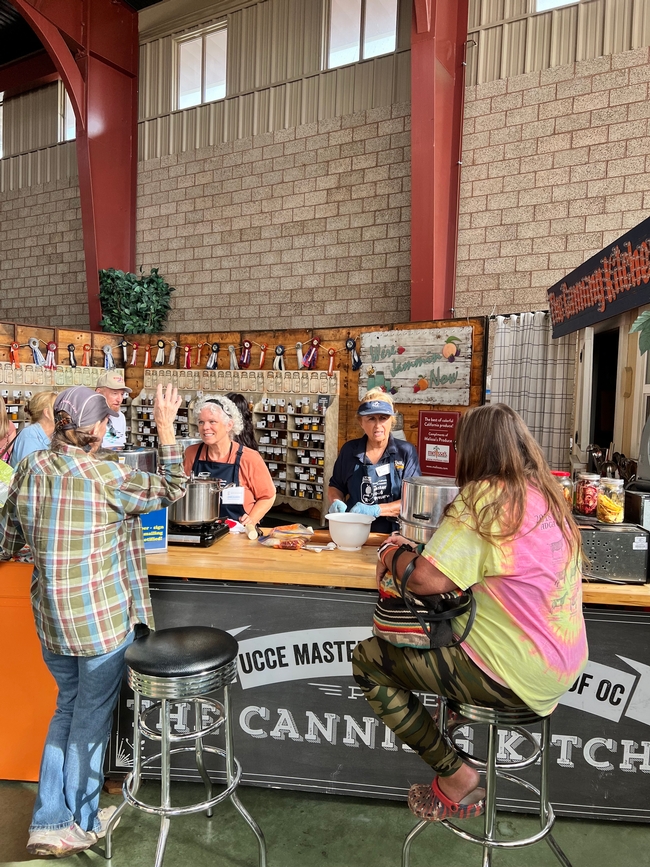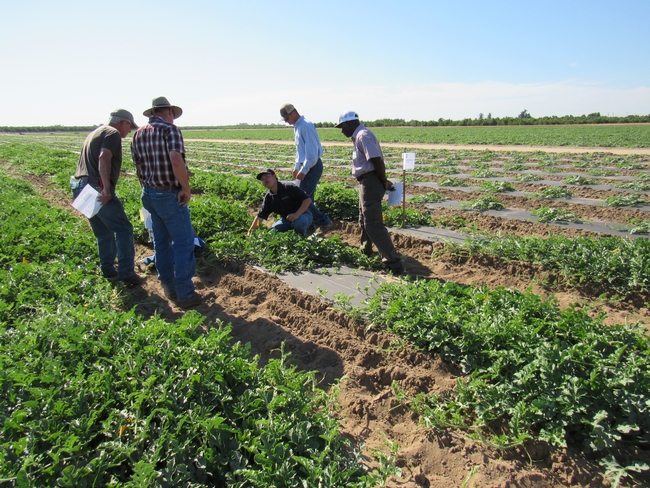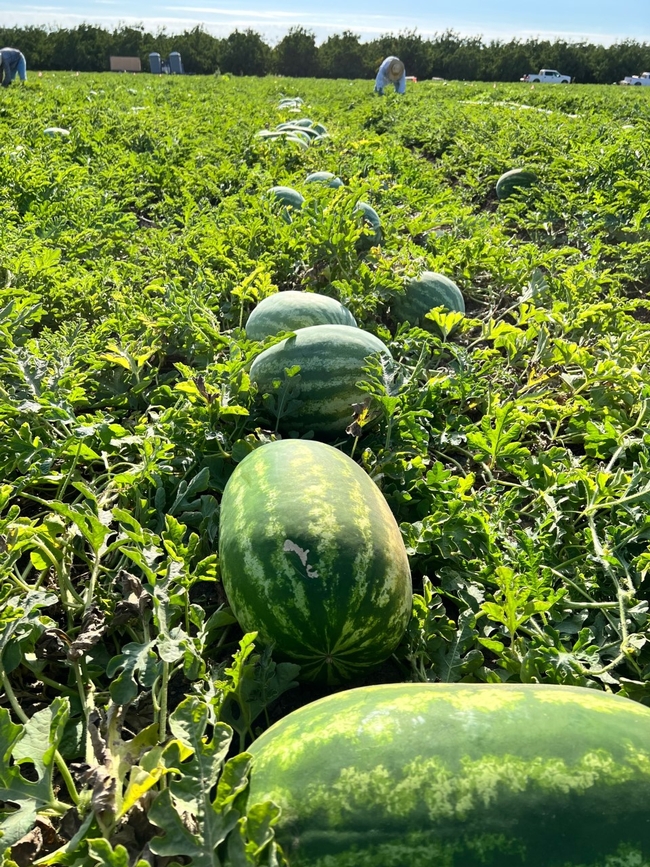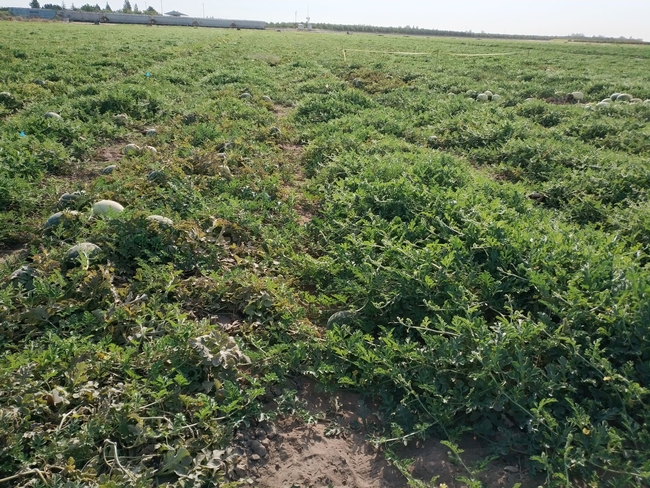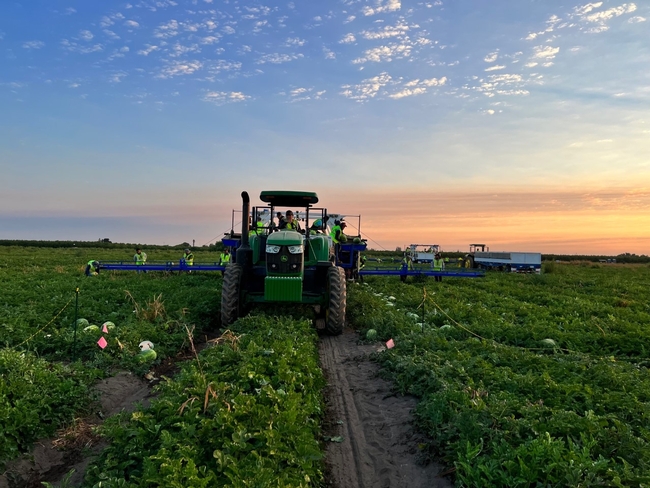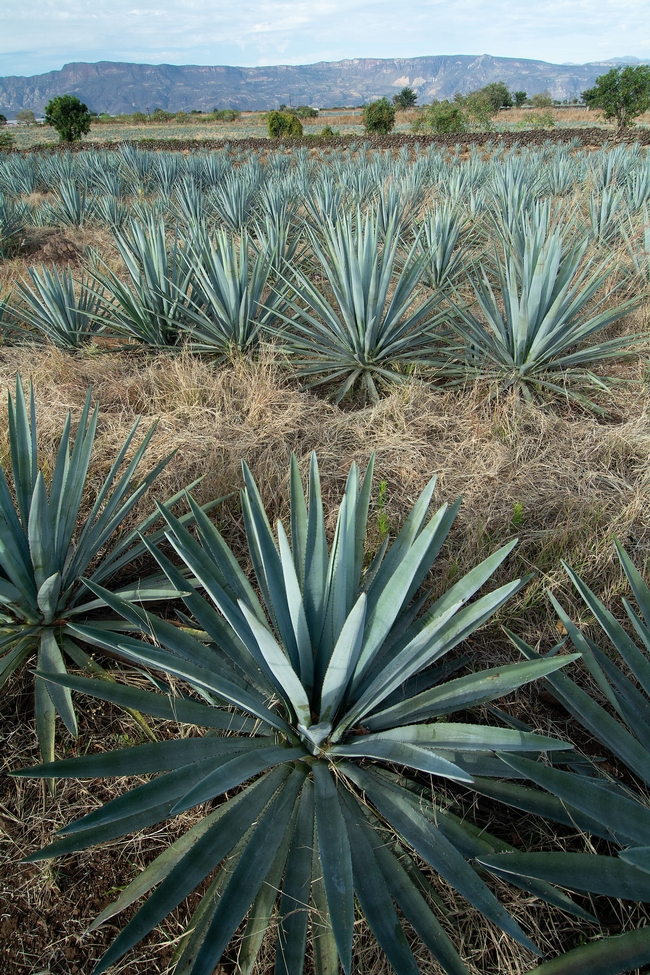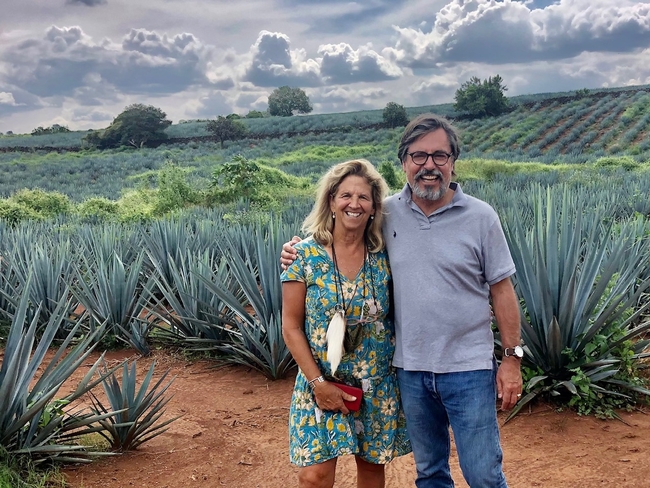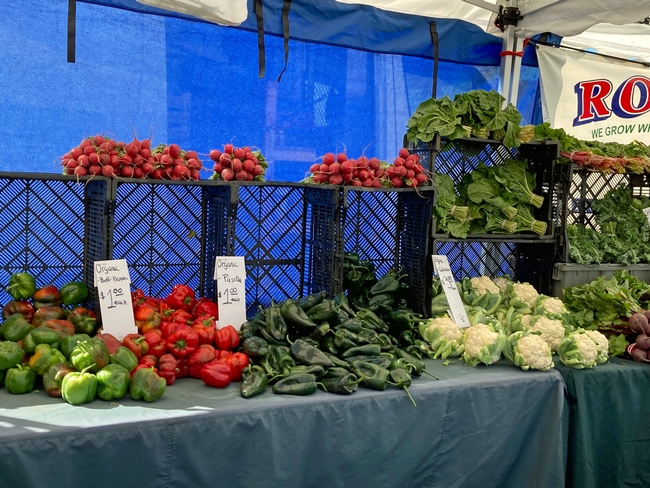Posts Tagged: food
The scent that could save California’s avocados
Scientists search for pheromone to disrupt insect mating
UC Riverside scientists are on the hunt for a chemical that disrupts “evil” weevils' mating and could prevent them from destroying California's supply of avocados.
Avocado weevils, small beetles with long snouts, drill through fruit to lay eggs. The weevil grubs or larvae bore into avocado seeds to feed, rendering everyone's favorite toast topping inedible.
“They're extremely hard to control because they spend most of their time deep inside the fruit, where they're very well protected from insecticides and natural enemies,” said UCR researcher Mark Hoddle, a UC Cooperative Extension entomology specialist.
Not only are the insects reclusive, they are also understudied, making information about them hard to come by. “All books on avocado pest management will tell you these weevils are bad. They're well recognized, serious pests of avocados, but we know practically nothing about them,” Hoddle said.
One strategy for controlling pests is to introduce other insects that feed on them. However, that is unlikely to work in this case. “Natural enemies of these weevils seem to be extremely rare in areas where this pest is native,” Hoddle said.
To combat avocado weevils in Mexico, an area where they are native, and to prevent them from being accidentally introduced into California, Hoddle is working with Jocelyn Millar, a UCR insect pheromone expert. They are leading an effort to find the weevil's pheromone, with the goal of using it to monitor these pests and prevent them from mating in avocado orchards.
Pheromones are chemicals produced and released into the environment by an insect that can be “smelled” by others of its species, and affect their behavior.
“We could flood avocado orchards with so much pheromone that males and females can't find each other, and therefore can't reproduce,” Hoddle said. “This would reduce damage to fruit and enable growers to use less insecticides.”
Alternative control strategies could include mass trapping, using the pheromone as a lure, or an “attract-and-kill” approach, where the pheromone attracts the weevils to small sources of insecticide.
The work to identify, synthesize and test this pheromone in the field is supported by grants from the California Department of Food and Agriculture, as well as the California Avocado Commission.
An initial phase of the project sent Hoddle to a base of operations three hours south of Mexico City, an area with large weevil populations. Using a special permit issued by the USDA, Hoddle brought weevils back to UCR's Insectary and Quarantine facility.
Hoddle and Sean Halloran, a UCR entomology researcher, captured the chemicals that avocado weevils release into the air. Possible pheromone compound formulas were identified from these crude extracts and are now being synthesized in Millar's laboratory.
“Weevil pheromones have complicated structures. When they're made in a lab, they can have left- or right-handed forms,” said Hoddle. Initially, Millar's group made a mixture of both forms to see if the blend would work as an attractant, as it is far cheaper to make the blend than the individual left- or right-handed forms.
Field work in Mexico with the pheromone cocktail by Hoddle, his wife Christina Hoddle, an associate specialist in entomology, and Mexican collaborators did not get a big response from the weevils, suggesting that one of the forms in the blend could be antagonizing the response to the other.
As the next step, the researchers plan to synthesize the individual forms of the chemicals and test the insects' response to each in Mexican avocado orchards.
Because the levels of avocado imports from Mexico are increasing, the risk of an accidental weevil invasion is rising as well. Hoddle is hopeful that the pheromone will be successfully identified and used to lower the risk this pest presents to California's avocado growers.
“We've been fortunate enough to be awarded these grants, so our work can be implemented in Mexico and benefit California at the same time,” Hoddle said. “The tools we develop now can be used to make sure crops from any exporting country are much safer to import into California.”
More than a TikTok trend, preservation is the future of food
UC Master Food Preservers give live canning demonstrations at Orange County Fair
If you visited the Orange County Fair in Costa Mesa during the past month, you might have seen the Master Food Preservers of Orange County in their rustic farmhouse-themed kitchen located in the OC Promenade exhibit hall.
If the decor did not catch your eye, the colorful rows of glass jars lined along the walls certainly would have. For an entire month, three volunteers conducted live canning demonstrations from 11 a.m. to 8 p.m. five days a week. They are with the UC Master Food Preserver Program, a public service and outreach program under UC Agriculture and Natural Resources.
The OC Fair is UC Master Food Preserver's largest event in Orange County. Last year, the UC Master Food Preservers engaged 7,000 people at their booth.
For over 30 years, the UC Master Food Preserver program has trained hundreds of volunteers statewide to keep Californians safe as they use culturally appropriate and research-based practices to preserve food in the home and provide engaging ways to explore healthy food.
Food preservation has a deep history rooted in human survival. Whether freezing, drying, fermenting or pickling, preservation is a practice that has prolonged the life of food and humans. Other benefits include reducing food waste and increasing food security.
The latest form of preservation, called canning, was introduced in the early 1800s according to a Smithsonian article. By placing food in a glass jar and heating it to a certain temperature for a prescribed period of time, oxygen is removed and a vacuum is created. This process prevents the growth of undesirable bacteria, yeasts and molds, thus keeping the food from spoiling.
This is what you would have found the UC Master Food Preservers demonstrating at the OC Fair.
During her shift, Flo Vallejo, UC Master Food Preserver since 2018, carefully chopped carrots and daikon into thin slices and placed them inside small mason jars with spices inspired by Vietnamese cuisine.
Between the produce donated by Melissa's Produce and the diverse spices donated by Tampico Spice, the possibilities of what you will see the UC Master Food Preservers canning are endless.
“This is something my great-grandmother, grandmother and mother did. I never understood it because they didn't let the little kids in the kitchen,” said first-year UC Master Food Preserver Alice Houseworth.
Many of the UC Master Food Preservers have some experience with canning, whether it be a practice passed down from generation to generation, or, in Houseworth's case, something they watched their elders do as a child.
Some might view canning as a hobby, but according to the UC Master Food Preservers, food preservation is an opportunity to prepare for economic and climatic change.
Esa Kiefer, another UC Master Food Preserver since 2018, expressed her concern for the rising prices of food and decline in arable land. “I feel like now is the time to prepare for these changing times,” she said. “Who knows what the future will look like for food?”
Perhaps the future of food will come from glass jars.
“You can even can chicken,” Houseworth said. “When it's cheap at the grocery store, you can buy it and use the pressure canner and then eat it when chicken prices go up.”
Vallejo recalls when pickling and canning were trending on social media during the stay-at-home phase of the COVID-19 pandemic, making it difficult to find mason jars.
“Preservation has been done for a long time. When I saw a lot of people doing it during the pandemic, I thought it was just because people had time on their hands. But I realized that many became concerned about the food supply and accessibility,” she explained.
The resurgence in food preservation interest makes the work of the UC Master Food Preserver program much more essential. Whether you are feeding a large family, living in a food desert or managing a tight budget, food preservation ensures you are fed today, tomorrow and beyond.
To learn more about the Master Food Preserver Program or to locate the nearest program in your area, visit: https://mfp.ucanr.edu/.
Less water, more watermelon: Grafting can help growers yield more
UC Cooperative Extension advisor tests ancient technique, new to California melons
As growers across California navigate severe drought, supply-chain challenges and rising inflation, reducing inputs has become an existential necessity. And for watermelon growers, a new twist on a thousands-year-old practice is showing real promise.
In the summer of 2018, watermelon growers brought a pressing problem to Zheng Wang, who had recently joined University of California Cooperative Extension as the vegetable crops and irrigation advisor for Stanislaus, San Joaquin and Merced counties.
Growers were seeing an increasing number of their cartons rejected by supermarkets and other buyers because of the melons' inconsistent quality, and Wang wondered if the ancient technique of grafting would help the state's melon growers, who plant about 10,000 acres of the crop each year.
Although California is the No. 3 watermelon-producing state in the U.S. (behind Florida and Georgia), there has been relatively little research on the melon across the state.
“Watermelons seem to have attracted not too much attention compared to other cucurbits, both Extension- and research-wise,” said Wang.
Fresh from his postdoctoral work at The Ohio State University on grafting fresh market tomatoes, Wang knew that vegetable growers understood the theoretical benefits of grafting, which combines a scion (the above-ground part of a plant) with the sturdy rootstock of a related plant.
But watermelon growers needed to make sure the added expense of using grafted plants would pay off. They were looking for science-backed evidence that the technique could actually reduce costs overall, while maintaining or boosting productivity.
“Sometimes as farmers we want to test a new cultural practice or crop product,” said David Jarrett, field manager at Van Groningen & Sons, who grows watermelons in the San Joaquin Valley. “A person like Zheng can set up a meaningful experiment and he has the tools for qualitative and quantitative analysis; Zheng knows how to measure a hunch and assign it a verifiable number measuring success.”
In his first trials in partnership with growers in 2019, Wang tested whether they could plant fewer watermelon plants, spaced at greater distances apart, while producing a stable yield of high-quality melons. The idea was that grafted plants, which are more vigorous and grow larger leaves and wider canopies, would produce consistently marketable melons that could be picked up to seven or eight times during an extended harvest season.
“That way we can make one plant equal ‘two,'” explained Wang, noting that non-grafted plants tend to produce only two or three picks of good melons, with quality declining rapidly afterward.
Grafting shows 'a lot of potential for the future'
After two years of trials, the growers determined, with strong confidence, that watermelons planted 4-5 feet apart could produce a yield equal to – or surpassing – that of plants 3 feet apart (the standard for their non-grafted counterparts).
According to Wang, growers reported that, on average, their successfully grafted fields produced 15% to 25% more watermelons than non-grafted fields per acre, while using 30% fewer plants and the same amount of water and fertilizers.
With the potential for greater profitability, grafting could be a major boon during a particularly challenging time for growers.
“California agriculture is stressed competing for finite resources such as land, water, fertilizer and other safe but effective chemical tools, but outside of this realm we can improve some of our crops by grafting,” Jarrett explained. “Just as many tree crops are grafted, we are learning that other crops can be successfully grafted too; the goal is to create a heartier plant, which may grow better in marginal soils with reduced inputs.”
Confidence in the technique has led to a significant increase in the planted acreage of grafted watermelon across California – from less than 250 acres in 2018 to more than 1,500 acres in 2021. At the same time, growers have adopted 4 or 5 feet as the new “standard” spacing for their watermelon plants, enabling them to reduce their populations while maintaining or boosting yield.
“Using grafting has kind of opened a new channel in the watermelon world, and for all vegetable production in California,” Wang said.
Next up for Wang is testing various combinations of scions and rootstocks. This year, he began variety trials with rootstocks of various cucurbit family members (like hybrid squashes, Citron and bottle gourd), with hopes of producing results that watermelon growers could use to decide the best options for their local conditions.
“In sum, there are a lot of unknowns – but also a lot of potential for the future,” he said.
Agave: The new drought-tolerant California crop?
UC Davis to study agave sustainability as tequila, mezcal industry grows
Agriculture in California faces an uncertain future as drought, wildfires and other climate extremes become more commonplace in the West. But a fledgling industry focused on growing and distilling agave plants, which are used to produce tequila and mezcal in Mexico, could be California's answer to fallowed fields and a lack of water.
Earlier this year a group of growers, distillers and retailers formed the California Agave Council to foster collaboration and offer a chance to share knowledge among members who previously had no formal network.
Now, the University of California, Davis, has established the Stuart & Lisa Woolf Fund for Agave Research to focus on outreach and research into the plants and their viability as a low-water crop in the state.
“The rainfall patterns and growing conditions in California are different from those where tequila is made,” said Ron Runnebaum, an assistant professor of viticulture and enology. “It is exciting to begin to harness the capabilities at UC Davis to determine which agave varieties can be grown commercially in California and what flavors can be captured by distillation to make unique California agave spirits.”
The fund was created with a $100,000 seed gift from Stuart and Lisa Woolf, who are Central Valley farmers and have a test plot of about 900 agave plants on 1.5 acres. They hope this gift will encourage others to also contribute.
The gift is focused primarily on optimizing production in California relative to Mexico, where labor costs are lower, and the farmers rely on rain rather than irrigation for water. Stuart Woolf believes California producers could grow larger plants with higher sugar content.
“I really believe we could be very competitive with Mexico,” he said.
The research also offers a chance to better understand the impact of location on the growth of the plant, which can be a source of fiber and alternative sweetener as well as the distilled spirits it can produce.
“As a drought-tolerant plant, agave holds great potential in water-stressed California,” Woolf said. “It's a crop that could get by with little to no water during periods of extreme drought.”
A crop with low water needs
Mezcal can be made from any agave variety in Mexico while tequila, Runnebaum said, comes solely from the blue agave plant grown within the geographically defined region of “Tequila.” In California, blue agave plants can weigh 110 pounds or more, and it takes about 11 pounds of agave to produce one bottle of tequila, according to a UC Davis article published last year. The plants in Mexico weigh 50 to 60 pounds on average, Woolf said.
Agave plants require minimal watering, can serve as firebreaks from wildfires and offer a chance for farmers to plant crops on land that would otherwise have to be fallowed, or abandoned because of a lack of water. It takes roughly six to eight years for the plants to mature.
“If we enter a severe drought, this is a crop I think we can avoid watering totally,” Woolf said. “For me, this plant is kind of coming around at the right time.”
Craig Reynolds, the California Agave Council founding director who has about 500 plants growing, says the industry is in “an embryo stage” and organizing can help the crop expand. He runs California Agave Ventures, which grows blue agave and sells starter plants to other growers.
“It's really taking off,” he said.
Coming together
About 40 growers and distillers gathered for a symposium in May to talk about the crop, from economics and logistics to site planning and processes. It ended with a tasting and sensory analysis of California products.
UC Davis hosted the event to bring people together and introduce them to what the university could offer in terms of research, training and outreach, Runnebaum said.
“I think there's a lot of promise in this potentially being a drought-tolerant crop in California,” he added. “UC Davis can help organize and research.”
The Woolfs would like their gift to be used to answer early research questions about growing sites, plant attributes and possible funding agencies, as well as gathering harvest data and producing a database with that information, according to the gift agreement.
Some key questions to answer: Is frost risk in California too high in relation to Mexico, where the plants thrive? Can California produce a fast-growing, high-sugar, disease-resistant crop?
In addition to creating best agricultural practices for the crop and doing economic analysis, UC Davis could serve as a training ground, much as it does for brewing and winemaking.
“UC Davis also has the potential to train future leaders for this industry,” Stuart Woolf said.
Editor's note: Runnebaum is affiliated with UC Agriculture and Natural Resources through the Agricultural Experiment Station at UC Davis.
Organic farmers to get technical assistance from CDFA and UC ANR
The California Department of Food and Agriculture is awarding $1.85 million to the University of California Agriculture and Natural Resources to increase technical assistance for California's organic farmers.
CDFA's State Organic Program is executing $850,000 in contracts with UC ANR to run through September 2024, while CDFA's Office of Environmental Farming and Innovation is awarding a $1 million grant to run from July 2022 to June 2025.
“California farmers provide 36% of all organic production in the United States,” said CDFA Secretary Karen Ross. “This funding expands technical assistance to growers transitioning to certified organic agriculture and supports our strong California community of organic farmers and consumers by conducting field trials and demonstration projects with farmers to improve organic practices.”
California organically farms just over 2 million acres, which is about 8% of the total agricultural acreage in the state, and will likely continue to expand over time as long as consumer demand continues to rise, according to Houston Wilson, director of UC ANR's Organic Agriculture Institute.
“Demand for organic agriculture has consistently grown every year for the past two decades,” Wilson said. “Organic currently accounts for 5.8% of domestic food sales.”
“We are excited to see CDFA increasing support for organic agriculture as part of a broader climate-smart agriculture strategy,” said Wilson. “As demand for organic continues to rise, California growers need increasingly targeted technical assistance in all areas of organic production and marketing.”
The CDFA funds will allow UC ANR to hire two academic coordinators, which are currently being recruited.
“The academic coordinators will work directly with growers, as well as develop research and extension projects that will involve existing UC Cooperative Extension personnel,” Wilson said. “One of the coordinators will specifically focus on connecting our efforts with small-scale and historically underserved growers through our partnership with the UC Small Farms Program.”
The organic practices can be used by conventional farms as well as organic farms.
“Just as organic farmers benefit from UC ANR's pest management, irrigation and crop production research, the new knowledge developed on organic practices by the UC Organic Agriculture Institute will be useful for all California farmers,” said Glenda Humiston, UC vice president for agriculture and natural resources.
Some of the key UC ANR project objectives include:
- Conduct research on soil health management, carbon sequestration and crop rotations in organic systems
- Create new extension and training opportunities for organic growers across California
- Provide technical assistance to both certified and transitioning organic growers
- Review and summarize organic acreage and practices in California
- Develop economic analysis of organic production and markets
“Clif Bar is proud to have supported the creation of the UC Organic Agriculture Institute and congratulates them on this new and important funding,” said Philippa Lockwood, Clif Bar social responsibility program manager. “Supporting the advancement of organic agriculture in our home state of California and the great work that's to come from the UCOAI is a true honor and we look forward to their impactful agricultural innovations ahead.”
The 2022-2023 state budget signed last week by Gov. Gavin Newsom includes $5 million in funds for CDFA to assist farmers with transitioning to organic operations, and the USDA recently announced an investment of up to $300 million for the same purpose.
Updated July 18, 2022, to add Philippa Lockwood quote.


